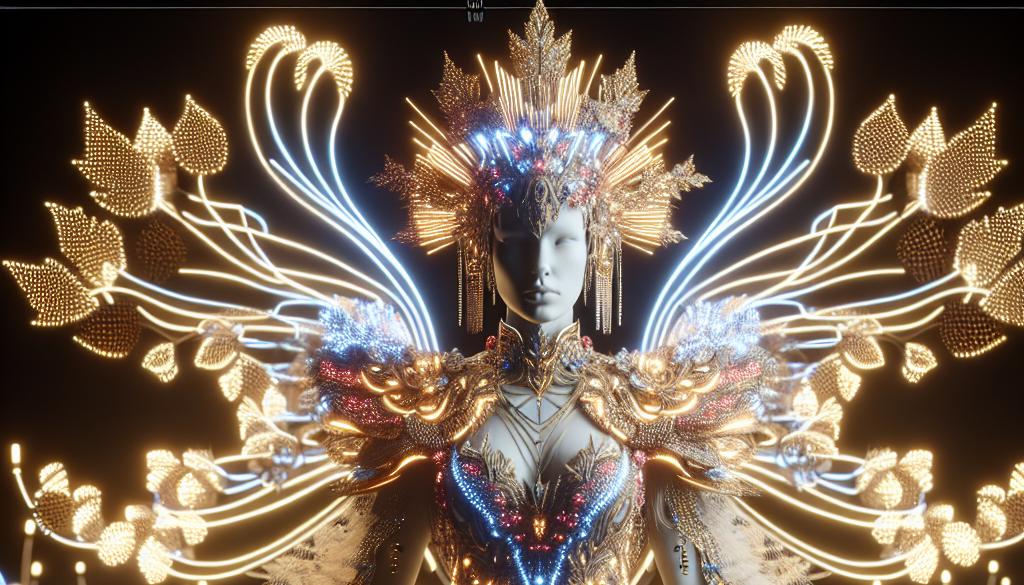
LED Clothing: The Dazzling Clash of Canada vs Finland Illuminated in 3000 Words
Prologue: Shrouded in Neon
In a world where fashion was not just worn, but experienced, LED clothing had revolutionized not just the runway, but everyday life. Colors shifted and pulses synchronized with heartbeats. The sky was no longer the only canvas for the dance of lights. Two nations—Canada and Finland—renowned for their innovative prowess, were set to clash in this luminous arena. The stakes were high, for prestige and pride were on the line.
The Challenge Announced
It all began with a single ambitious tweet from the International Fashion Technology Federation: “Introducing the first-ever Luminescence League Championship. Who will illuminate the world stage? #CanadaVsFinland.” The fashion world responded with a frenzy. Designers in both countries were thrust into a fervor, sketching ideas where technology and fashion seamlessly wove into a dazzling masterpiece.
Canada Prepares: Northern Lights in Motion
In the heart of Toronto, the Canadian team, led by renowned designer Amelia Blake, was a whirl of activity. Known for her ethereal designs inspired by nature, Amelia envisioned garments that mimicked the mesmerizing Northern Lights. Her studio buzzed with energy as fabrics were embedded with intricate LED circuits that changed hues with temperature variance, echoing the celestial phenomena.
Finland’s Vision: Symphony in Snow and Sound
Across the Atlantic, in Helsinki, Finnish designer Mikael Lahti and his team were hard at work in their minimalistic, high-tech studio. Mikael, a master at creating garments that harmonized with their environments, had conceptualized a collection that responded to the crisp Finnish weather, incorporating sensor-driven designs that adapted to the ambient sounds around them. Their garments glowed in soft blues and whites, evoking the serene elegance of Finnish winters.
The Big Day: A Spectacular Showdown
The much-anticipated day arrived, held at a monumental arena specially designed for the event. Rows of spectators sat with anticipation, their seats aglow with miniature LED wristbands that promised an interactive experience. The air was electric, a vibrant hum of chatter and expectation as luminous decorations hung from the arched ceilings.
Canada’s Presentation: An Aurora Ballet
Amelia’s team was first. As the lights dimmed, the crowd hushed. Models glided onto the runway wearing creations that flowed like liquid light. Each garment was a living canvas, shifting from soft greens to vivid purples, as if painting the sky at midnight. The LEDs, hidden skillfully within the fabric, created a ballet of colors, capturing the awe of nature’s light show.
Finland’s Display: The Enchanted Frost
Next, it was Mikael’s turn. His models emerged in dazzling whites and silvers, their attire casting an ethereal glow. As they moved, a soundscape filled the air, a symphony built from the whispers of the chilly Finnish wind and the crunch of snow. The garments responded to this ambient sound, shifting in brightness and subtlety. The effect was an enchanting dance of light and sound, pulling the audience into a realm of winter wonder.
The Decisive Vote
The moment of decision was at hand. A panel of esteemed judges, each an authority in the realms of fashion and technology, deliberated over the two spectacular displays. Moved by both presentations, they acknowledged the distinct fusion of art and science from each nation. The vote was close, but it leaned in favor of Mikael’s vision of sound and light integration.
Aftermath: A Shared Victory
Though Canada did not claim the prize, Amelia and her team were celebrated for their boundary-pushing vision. Both nations’ efforts cemented their places as pioneers in the future of fashion technology. What started as a clash ended in a cohesive celebration of innovation and culture. As the final applause echoed through the arena, it was clear that both Canada and Finland had illuminated more than just the runway—they had illuminated the endless possibilities of human creativity.
Epilogue: The World Embraces the Glow
Back in their home countries, designers drew inspiration from the spectacle, weaving LEDs into everyday fashion—from gym wear that motivated with bursts of color, to formal attire that adapted to the tone of a room. The event sparked a global movement towards clothing that transcended traditional boundaries. As cities were lit by neon hues and garments responded to their environments, a new era of fashion emerged.
